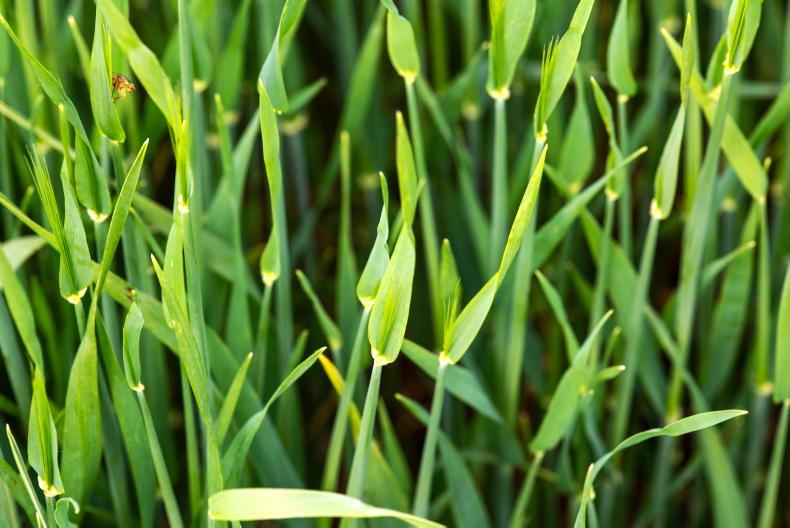Some farmers have the gate closed on their winter barley crops, while others have yet to apply the final fungicide, but it is likely due as soon as possible on the next dry day.
The aim is to spray when the awns are visible - most crops are now at this stage or the head is now starting to emerge.
This is sometimes described as the paintbrush stage. The awns are peeping out along with the flag leaf, but the barley’s head has not yet appeared.
Crops are very variable this season, as there were numerous different sowing dates, fertiliser timings and weather affected crop growth.
This year, a large majority of growers are on two-spray programmes, as rain delayed the season. The final spray aims to keep the key diseases such as rhychosporium and net blotch at bay, but the paintbrush timing targets ramularia.
Preventing disease
Preventing disease is always best and most efficient. By the time ramularia is visible, it is too late to control, so preventing is essential for this disease and that is why timing is so important.
Folpet at 1.5l/ha should be included in the final fungicide to prevent ramularia. The mix should also include a mix of an azole and an SDHI, possibly with a strobilurin as well.
These products can be applied at half rates in winter barley.

Awns emerging on winter barley in Teagasc Oak Park, Co Carlow on 8 May 2024. \ Claire Nash
There are many different options and these often come in a pack or in one can. Revymaxx, Siltra or Mandarin, Macfare and Elatus Era are just some of the options available.
Some growers may be on a three-spray programme, which they have completed or some have still to apply the final fungicide. This should be applied soon, particularly on early varieties such as some of the six-row hybrids and BYDV-tolerant varieties such as KWS Joyau. The head is out on many of these crops.
Teagasc research shows that delaying the final fungicide by two weeks to apply to the head can result in an average decrease in yield of 0.4t/ha.
Some farmers have the gate closed on their winter barley crops, while others have yet to apply the final fungicide, but it is likely due as soon as possible on the next dry day.
The aim is to spray when the awns are visible - most crops are now at this stage or the head is now starting to emerge.
This is sometimes described as the paintbrush stage. The awns are peeping out along with the flag leaf, but the barley’s head has not yet appeared.
Crops are very variable this season, as there were numerous different sowing dates, fertiliser timings and weather affected crop growth.
This year, a large majority of growers are on two-spray programmes, as rain delayed the season. The final spray aims to keep the key diseases such as rhychosporium and net blotch at bay, but the paintbrush timing targets ramularia.
Preventing disease
Preventing disease is always best and most efficient. By the time ramularia is visible, it is too late to control, so preventing is essential for this disease and that is why timing is so important.
Folpet at 1.5l/ha should be included in the final fungicide to prevent ramularia. The mix should also include a mix of an azole and an SDHI, possibly with a strobilurin as well.
These products can be applied at half rates in winter barley.

Awns emerging on winter barley in Teagasc Oak Park, Co Carlow on 8 May 2024. \ Claire Nash
There are many different options and these often come in a pack or in one can. Revymaxx, Siltra or Mandarin, Macfare and Elatus Era are just some of the options available.
Some growers may be on a three-spray programme, which they have completed or some have still to apply the final fungicide. This should be applied soon, particularly on early varieties such as some of the six-row hybrids and BYDV-tolerant varieties such as KWS Joyau. The head is out on many of these crops.
Teagasc research shows that delaying the final fungicide by two weeks to apply to the head can result in an average decrease in yield of 0.4t/ha.







 This is a subscriber-only article
This is a subscriber-only article











SHARING OPTIONS: